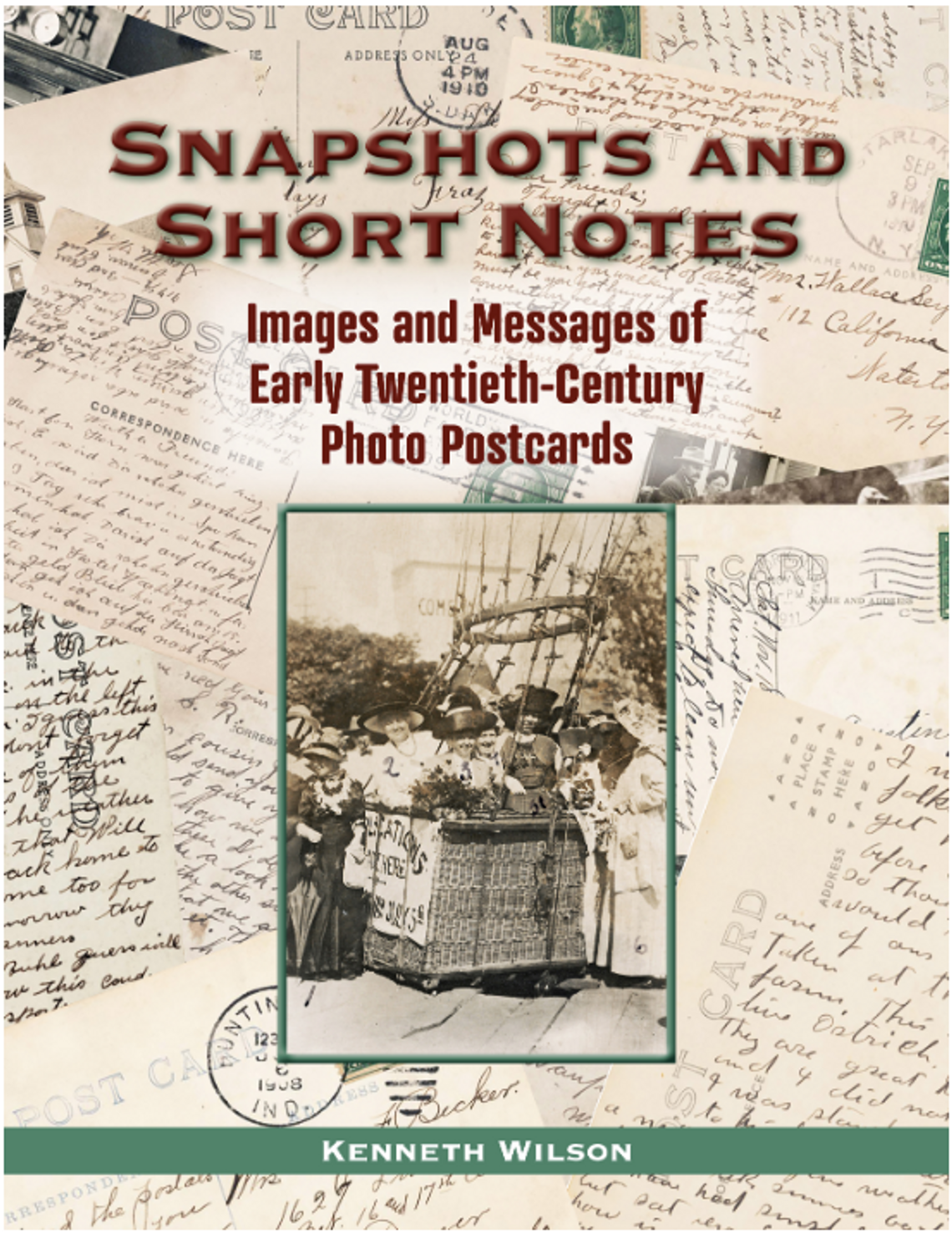By Sahar Chmais
Open a window to a snapshot in time, capsuled in black and white, where a 20-year-old woman tells a friend about her ordinary day working at the telephone office – and in that same shot the woman had forgotten to wear her trademark glasses. A simple postcard, one sentence and one photo, but this image taken in 1911 captures a shift in time and becomes witness to history in the making.
Kenneth “Ken” Wilson, of Dripping Springs and author of “Snapshots and Short Notes: Images and Messages of Early 20th Century Photo Postcards”, has made sense of these blurs in time and found the complicated history detailed behind the camera lens.
During Wilson’s 20 years of collecting postcards for hobby, his interests were peaked and he began researching the background and meaning that came with every image. With hundreds of postcards collected, he decided to condense it down to 170 and walk readers through historical events rarely documented in text books.
“Postcards were so popular after the turn of the century,” Wilson, a seasoned collector, said. “It was a new phenomenon; most people did not have telephones. The world became enamored because they could see pictures from all over the world.”
These were not the only charms of the postcard. Wilson said they were the email of its day, quickly connecting people through words and images. And for collectors, they could chronicle history because they were real images.
Postcard photo of a phone operator in 1911. On the back is written, "A very Merry Xmas and a Happy N. Year is the wish of your old friend. The
reverse is the picture of me at the telephone office I work at. It’s taken without my
glasses so I don’t look just right. Ans. Rose Kral"
reverse is the picture of me at the telephone office I work at. It’s taken without my
glasses so I don’t look just right. Ans. Rose Kral"
For example, the woman patching others through the phone is not just a woman. She represents the history of how women became dominant in a field which was first assigned to men.
$2>These bursts into the past show audiences how the former times were built by everyday people. Wilson explains in his book how women eventually became the voice of the business. He writes of the shift, “women were more patient and courteous with customers and could be paid less than men.”
This ordinary woman’s adventure does not end with this photo; Wilson went so far to find an image of her decades later, wearing her trademark glasses, sitting next to her husband.
Within the postcards Wilson documented, he tells his audience stories of women’s rights as they pass out pamphlets encouraging voting before suffrage rights were around. Postcards recipients and authors can also witness the evolution of vehicles and other technologies as they were reaching a turning point in time.
While these advancements were captured in the images, some postcards also showed the bitter and tragic parts of the early 20th century – racism.
“Racial issues are described [within the postcards] if you read between the lines,” Wilson said. “You see photos of African Americans taken in the south and sent as caricatures and novelties. I have a photo of two little Black girls sitting on a porch, with a quote to someone up north asking ‘if you think they had a bath, would they be white?’”
Lynchings and people in black face were also documented and sold as souvenirs. Most of the time people transferred postcards of lynchings hand to hand “and with hopefully some shame along with it, like ‘better not show this to everybody,’” Wilson said.
Then there were photographs of Native Americans, some staged to show that they were being treated well, but then other photos showed them standing in line, waiting for small rations of food.
Throughout different chapters, hosting photos from a variety of topics in the early 1900s, Wilson details the historical impacts. But he was not originally a historian.
Wilson holds a master of business administration degree and soon got sick of sitting in a cubicle all day. He branched out into many artistic fields, such as selling hand-made jewelry. His most recent venture, the collection and documentation of these postcards, took him about five years to finish.
“I thought it would take one year to put together,” Wilson said, “but it took five because of amount of research.”
Unlike many other books containing the images of postcards, Wilson wanted to make sure the history came through. He felt inspiration through the work of Ken Burns and often speaks of how Burns makes connections to history through people.
“This doesn’t live up to his work,” Wilson said of his book, “but it’s the same concept – bringing people back to life.”
To pick up a copy of this local author’s book, visit the University of North Texas Press website, or find it on Amazon.











